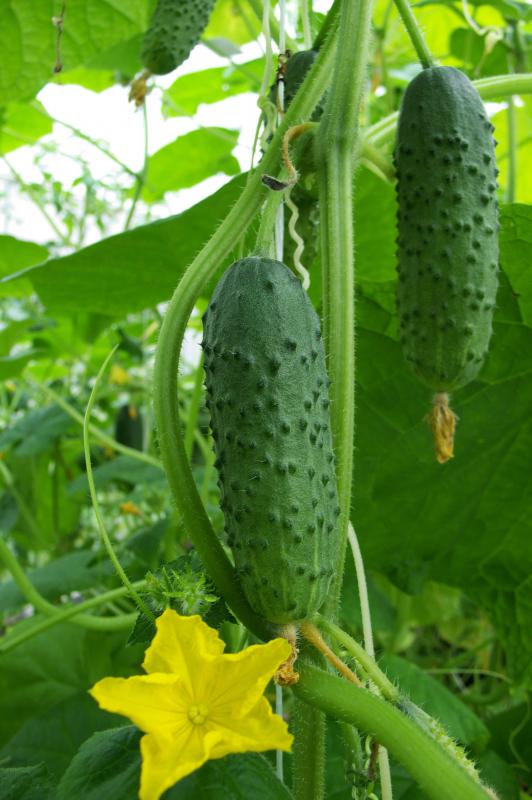At WiseGEEK, we're committed to delivering accurate, trustworthy information. Our expert-authored content is rigorously fact-checked and sourced from credible authorities. Discover how we uphold the highest standards in providing you with reliable knowledge.
How do I Dry Seeds for Next Year?
The exact way you dry seeds depends on the type of plant they come from, but the key aspect of seed drying is controlling the temperature and humidity around the drying area. You'll also need to consider the type of plant you're harvesting from, since the seeds from different plants need to be harvested at different times. If you're very concerned about getting the exact same plant for the next year, then you'll have to be very careful to avoid cross-pollination.
Wet and Dry Processing
The two main methods of seed drying are wet processing, which is used for plants that produce seeds in fruit or another wet medium; and dry processing, which is used for plants that produce dry seeds, like those that produce pods.
Wet processing:
- Scrape the seeds from the fruit and rinse them off.
- Put them in a pan or bucket full of water, and skim off any that float, since they're often not viable.
- Pour off the water through a strainer.
- Lay out the clean seeds on a tray or piece of screen to dry away from direct sunlight.
Dry processing:
- Harvest the seeds and lay them out to dry on a tray or piece of screen.

When the seeds are completely dry, they are ready for storage. You should remove any extra chaff or leftover dirt by gently brushing the seeds with your fingers or by sifting them through a fine sieve — even if an individual seed is too large to go through, small bits of material will. Store them in paper envelopes labeled with the type of seed they store. Whether you're wet or dry processing, it's important to control the environment around the drying area. Temperatures between 40° and 85°F (4.5° to 30°C) are best.
When to Harvest

Different seeds are harvested at different times. Most fruit seeds can be extracted after ripening, but before rotting. Squash, cucumber, and pumpkin should be left on vine until after the first frost. The seeds can then be separated from the pulp and dried at room temperature. Pod plants and seed heads should be left to dry on the vine, and the seeds should be gathered before dispersion. Biennial crops, primarily made up of root plants, do not produce seed at the end of the growing season; instead, the roots should be dug up during the fall and stored at a temperature between 32° and 45°F (0° to 7°C) through the winter.
Avoiding Cross-Pollination

If you're very concerned about getting the exact same type of plant for the next year, then you'll need to make sure that you only harvest from specific ones. For the plant to be the same as its parent, it can only be pollinated from plants of the same variety. For airborne pollinated crops, no other varieties can be within 1 mile (1.6 km). Insect pollinated plants must be at least 0.25 mile (0.4 km) away from other varieties. Self-pollinated plants have no risk of cross-pollination.
AS FEATURED ON:
AS FEATURED ON:













Discussion Comments
Don't forget to add the date onto your seed packets when you're storing them. In some cases they will last more than a year and you might need to stagger planting and harvest, so it's better to know exactly when and where each crop came from.
You might also want to think about genetics a little bit when you're selecting your seeds. If one plant did exceptionally well, that's the one you should be collecting from. Maybe not exclusively, though, as it's never a good idea to keep all of your eggs in one basket.
@pastanaga - Hybrid plants are a really bad idea for seed as well. Often they are the result of cross breeding two particular types of plant so that their offspring will perform in a certain way, but there's no guarantee that the seeds will work in the next generation because of the way genetic traits show up.
If you get heirloom types, this means they have been grown for hundreds of years and have been bred to grow well, and true to type.
The other bonus is that people who grow heirloom plants will usually be happy to share with you hundreds of years worth of information on how to grow them and how to harvest them and so forth. This is information that will serve you for a long time.
If you are interested in growing plants from seed every year, the very first thing you need to do is make sure you are growing heirloom types and not hybrids or anything that has been patented. You can get into trouble growing patented species again after they have been harvested, as the company who developed the type wants to be able to make money from selling the seed or the young plants every year.
Often it won't even be possible, because they would have deliberately made sure that the seed won't be viable to prevent this from happening.
Post your comments